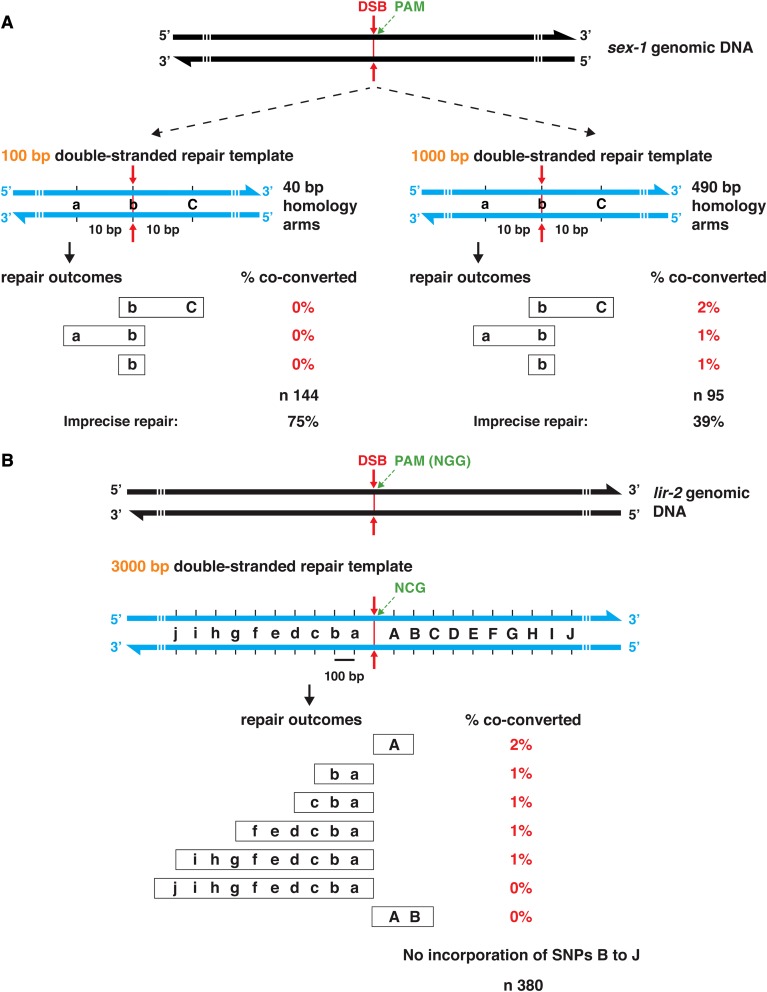Figure 4.
HDR from double-stranded repair templates was asymmetric relative to the DSB and less efficient than repair from single-stranded templates. (A, left) The experiment in Figure 2A was reproduced in design except for the use of a linear 100 bp double-stranded repair template instead of a 100 nt single-stranded repair template. Unexpectedly, no HDR was observed, although 75% of the dpy-10 mutants had undergone imprecise repair at the DSB in sex-1. (A, right) The experiment in the left panel was repeated, except the linear double-stranded repair template (1 kb) had 490 bp homology arms instead of 40 bp arms. The outcome was more successful, but the frequency of HDR was greatly reduced compared to the frequency of HDR in Figure 2A with single-stranded repair templates. (B) Analysis of SNP insertions relative to the distance from the DSB. The 4 kb double-stranded repair template had 500 bp homology arms and 10 polymorphisms at ∼100 bp intervals on both sides of the DSB. Each of the 20 polymorphisms created a HindIII restriction site for analyzing repair outcomes. Precise HDR was infrequent and exhibited a striking directionality in which infrequent insertions occurred up to 900 bp from the DSB, but predominantly only 5′ of the PAM. For A and B, the number of animals with the diagrammed insertion was expressed as the percentage of the total number of dpy-10 Dpy or Rol mutants (n). Cas9 RNPs were used in A, and DNA expression vectors were used for Cas9 and the guide RNAs in B. The 4 kb repair template was introduced as plasmid DNA.

